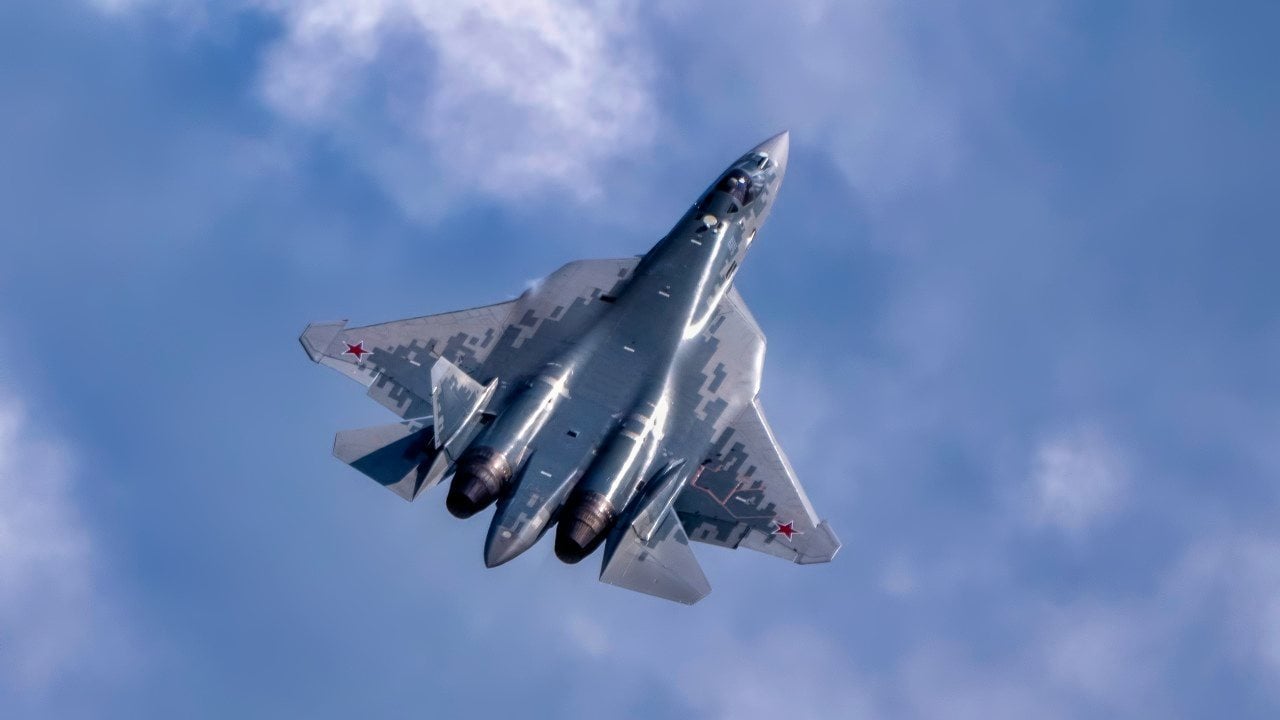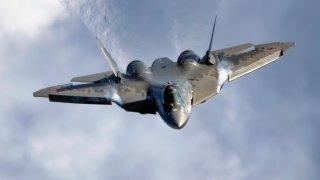Is Russia Scared to Send the Su-57 Felon Fighter Into Battle over Ukraine?
The Russian Su-57 "Felon" fighter jet, touted as the latest in Russian aerospace technology, has been used sparingly in Ukraine to protect its international reputation, as Moscow aims to sell the aircraft overseas.
Summary and Top Points You Need To Know: The Russian Su-57 "Felon" fighter jet, touted as the latest in Russian aerospace technology, has been used sparingly in Ukraine to protect its international reputation, as Moscow aims to sell the aircraft overseas.
-The Su-57 is a twin-engine, single-seat multirole fighter with a variety of munitions, but questions remain about its stealth capabilities compared to U.S. and Chinese jets.
-Despite ongoing conflict, Russia continues to export weapons, though it keeps its most advanced systems like the Su-57 and T-14 Armata away from the battlefield to avoid diminishing their market value.
-The Su-57 “Felon” fighter jet represents the latest in Russian aerospace technology.
Russia Shields Su-57 Felon From Heavy Combat to Protect Sales
Western intelligence estimates suggest the Russian Aerospace Forces have used the Su-57 Felon in Ukraine, but in a small role with little impact. Moscow holds the Su-57 back from the battlefield to protect its international reputation, since Russia wants to sell the aircraft overseas.
The Su-57 Felon
A twin-engine, single-seat multirole fighter jet, the Su-57 Felon is Russia’s newest fighter jet. As with most new Russian weapons systems and munitions, the Su-57 is riddled with problems, and only a few of the aircraft are combat-ready. The Ukrainian military also very likely destroyed a Su-57 on the ground.
Nonetheless, the Su-57 looks like a capable aircraft. It can carry a combination of air-to-air and air-to-ground munitions, including R-73 heat-seeking air-to-air missiles and R-27 radar-homing air-to-air missiles, as well as cruise missiles, hypersonic munitions, glide bombs, rockets, and conventional bombs. It also packs a 30 mm Gryazev-Shipunov GSh-30-1 cannon with 150 rounds for dogfights or strafing.
Much debate surrounds the Su-57’s stealth capabilities, which would largely determine whether the aircraft is on par with the latest American and Chinese fighter jets.
Although the Kremlin claims the Su-57 Felon is a stealth fighter jet, it is likely an advanced 4.5-generation aircraft that cannot defeat radar as effectively as the U.S. F-22 Raptor or F-35 Lightning II fifth-generation fighter jets. Stealth is not an easily defined capability. An aircraft with stealth attributes, like the F-35 Lightning II, is much harder for enemy radars and sensors to pick up. To achieve this feat, stealth aircraft use a combination of design, special paint coatings, and electronic countermeasures.
An International Interest for the Su-57 Felon?
Russia is one of the largest exporters of weapons systems and munitions in the world. Before its large-scale invasion of Ukraine, the Kremlin could make up to $15 billion a year selling tanks, fighter jets, warships, missiles, armored personnel carriers, helicopters, infantry fighting vehicles, small arms, and ammunition to foreign countries. Its clientele is mainly African and Middle Eastern countries, as well as India and China.

Although the Russian military is engaged in its heaviest fighting since the end of World War II, the Kremlin still sells weapons systems abroad, making between $5 billion and $8 billion annually.
As with most goods, marketing plays an important part in weapons sales. Russian defense officials understand that very well and make sure not to put their newest and potentially most lucrative goods in a position that would diminish their value and marketability. As such, weapon systems like the Su-57 Felon, the T-14 Armata main battle tank, and the S-500 Prometheus air defense system are absent from the fighting in Ukraine – Russian officials don’t want them destroyed by Ukraine’s Western weapons.
About the Author
Stavros Atlamazoglou is a seasoned defense journalist specializing in special operations and a Hellenic Army veteran (national service with the 575th Marine Battalion and Army HQ). He holds a BA from the Johns Hopkins University and an MA from the Johns Hopkins’ School of Advanced International Studies (SAIS). His work has been featured in Business Insider, Sandboxx, and SOFREP.


